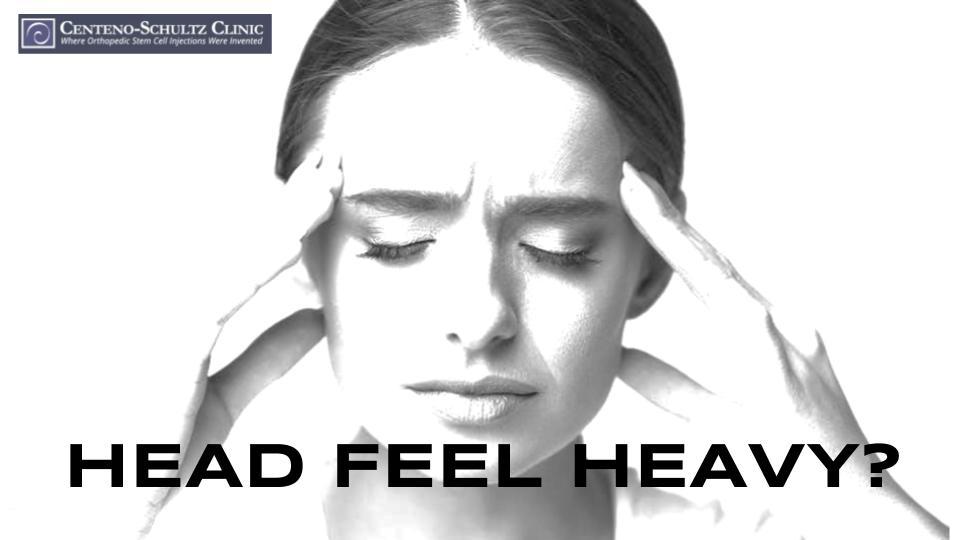Heavy Head?
Does your head feel too heavy for your body? Do you tend to get a lot of headaches? If so, the culprit might be weak upper-neck muscles. We’ll learn more about these in a moment, but, first, a few facts about the head.
The Head May Be Small, but It Packs a Lot of Weight
Proportionally speaking, our head isn’t huge in comparison to the rest of our body; however, it contains some of the body’s heaviest structures. The average brain, for example, accounts for about three pounds. The large skull bone, about two and a half pounds. Add in all our teeth, jaws, eyeballs, all the muscles, and much more, and the average head can weigh 11 pounds or more (on average, about 8–9% of our total body weight). To give you a comparison—our head weighs as much as a bowling ball! This puts a lot of pressure on our small upper-neck muscles, which are primarily responsible for balancing, supporting, and stabilizing our very heavy heads. With all that weight up there, unfortunately, this can sometimes be a big challenge for our neck, especially in the presence of an injury.
Upper-Neck Muscles: The Head Stabilizers
Studies have found that with chronic back pain or a back injury, the multifidus muscle, which is a series of fingerlike deep muscles that stabilize the spine, can atrophy, or waste away, in many patients. Similarly, when a patient has experienced some type of neck injury or trauma, such as whiplash, for example, and the condition is left unaddressed, the upper-neck muscles can weaken and shrink away over time. You might not even realize you have a lingering neck issue. Perhaps you were in a seemingly minor car accident a few years ago that left you with a sore neck for a couple of days, but the pain went away, so you didn’t give it a second thought. Unfortunately, it could have left behind some hidden facet joint or ligament damage that will worsen over time.
For example, if the ligament damage isn’t addressed, the ligaments will become more lax over time, making it harder to support the muscles that hold the head. When the muscles tire of taking on all the extra work, trying to support the head without their own proper support structure, this can cause the neck muscles to then weaken and shrink. As the atrophy advances, the upper-neck muscles can no longer stabilize and support the head. Hence, you may experience that “heavy head” feeling, or get that feeling that your neck is trying to balance a bowling ball.
As time goes on, if the loose ligaments and upper-neck muscle damage hasn’t already led to headaches, all that head instability can further injure the nerves, discs, joints, and surrounding muscles, and this constant battle to support the head can cause chronic headaches. Watch Dr. Centeno’s brief video below on “Does Your Head Feel Too Heavy?” for more info. (the video is silent):
Treating the weak neck muscles and damaged neck structures is key to stabilizing the head.
Does Your Head Feel Too Heavy? How to Treat Weak Upper-Neck Muscles
In interventional orthopedics, we first check for instability. If a patient has a neck injury and headaches, we’ll have them lift their hands above their head. If this motion is difficult to perform or the patient is unable to do it, we will then hold the patient’s head to manually support it and, again, ask them to raise their hands above their head. About a minute into the video below, you can watch Dr. Centeno actually perform this during an examination:
If they can now perform the motion with their head supported, this is a pretty good sign there is instability and atrophy in the neck muscles. This usually means the upper trapezius muscles have become overloaded as they have now jumped in to take on the extra head-stabilizing work of the weakened muscles, but since the trapezius muscles also are responsible for lifting the arms, performing both functions is very difficult or impossible. Learn more about the trapezius in Dr. Centeno’s video below.
So how do we treat this instability in the neck muscles? There are a few options, which follow:
Slow range-of-motion and strengthening exercises for the neck, keeping the arms at the sides and performed twice per day (see the trapezius video above for some exercise suggestions)
Specialized physical therapy exercises
Injections of orthobiologics, such as platelet-rich plasma (PRP) or stem cells, in the neck facet joints at the weak-muscle levels or to tighten up those loose ligaments.
If your head feels like your working extra hard to balance bowling ball and you’re suffering from frequent headaches, it’s a good idea to have your neck checked by your interventional orthopedics physician. If there are lax ligaments or neck muscles that have atrophied, the problem won’t just go away; it will only get worse. Does your head feel too heavy? If so, the sooner you can address the issue, the better!
